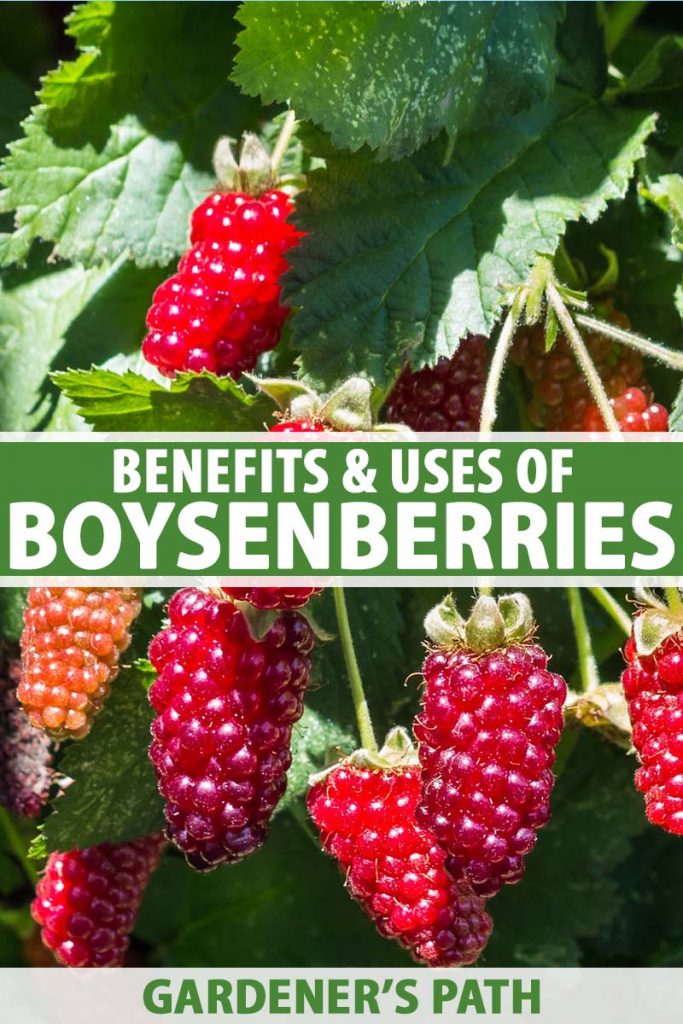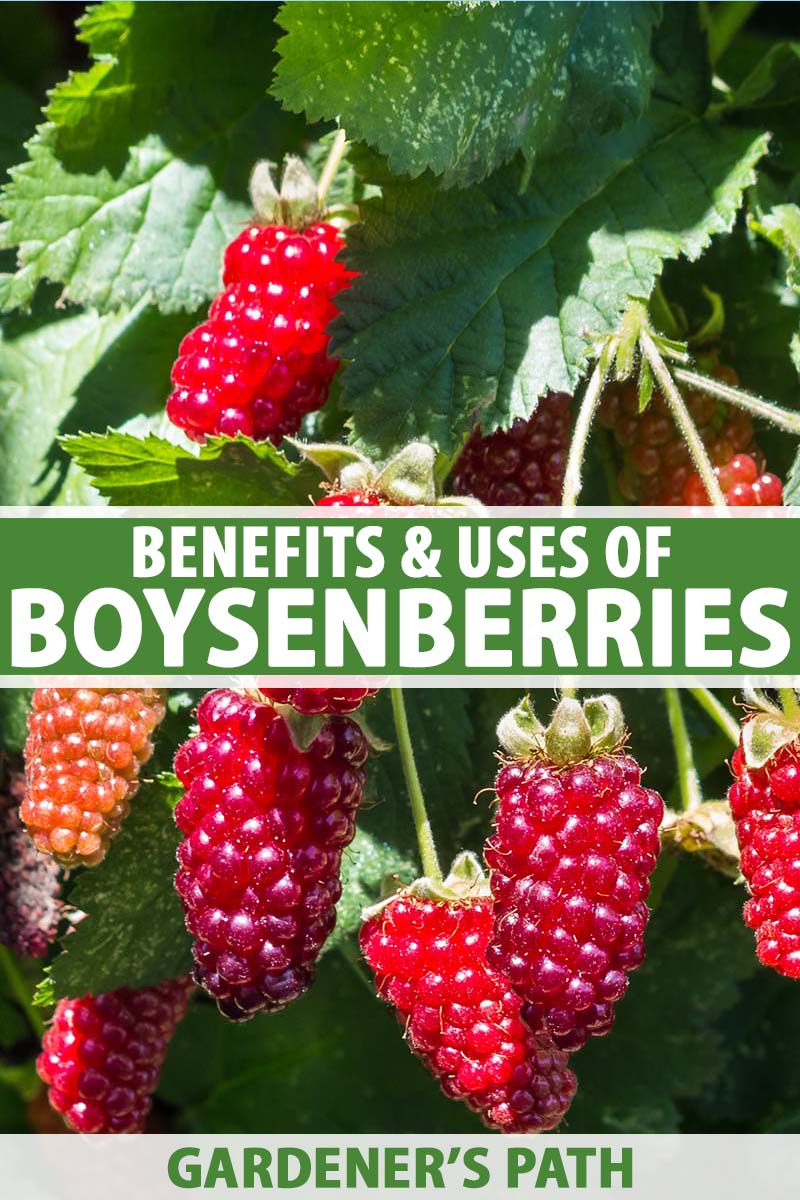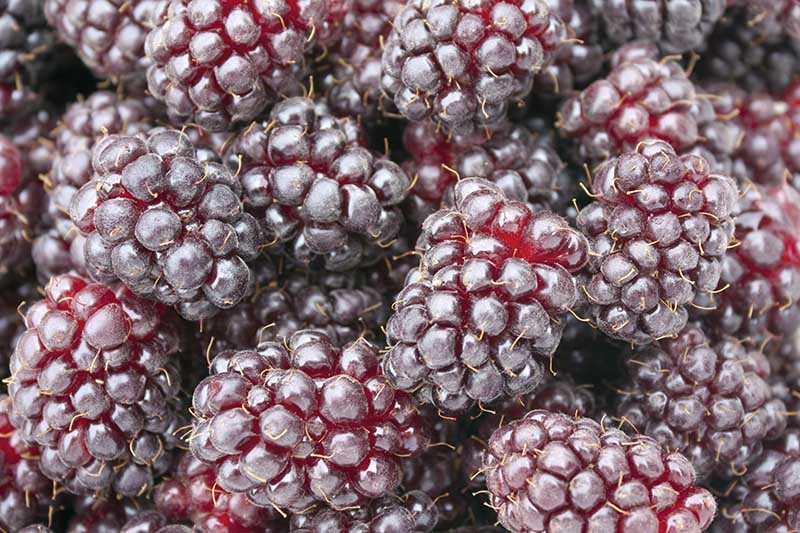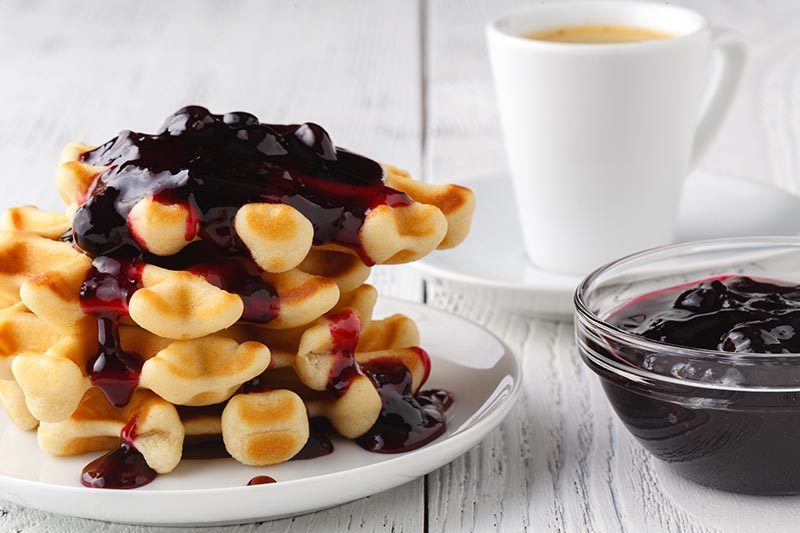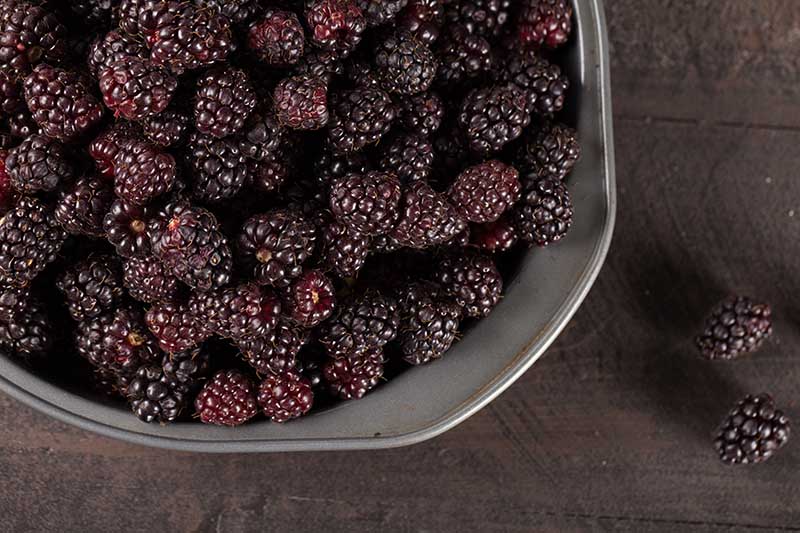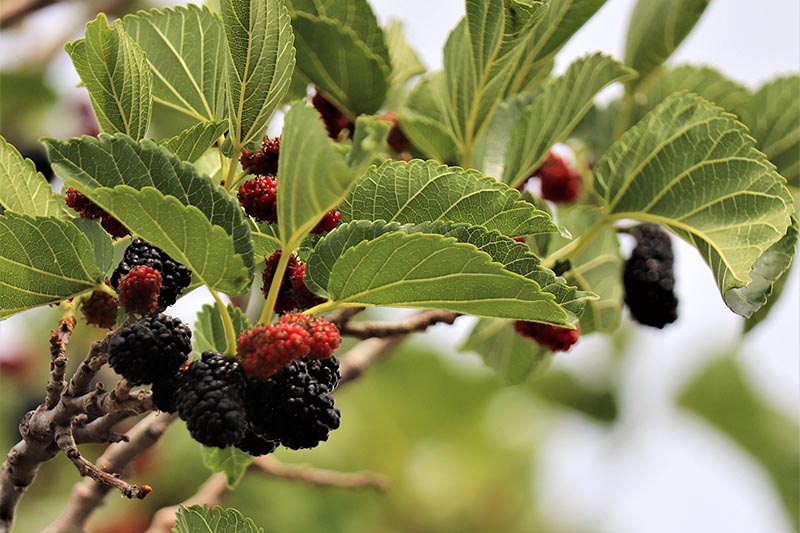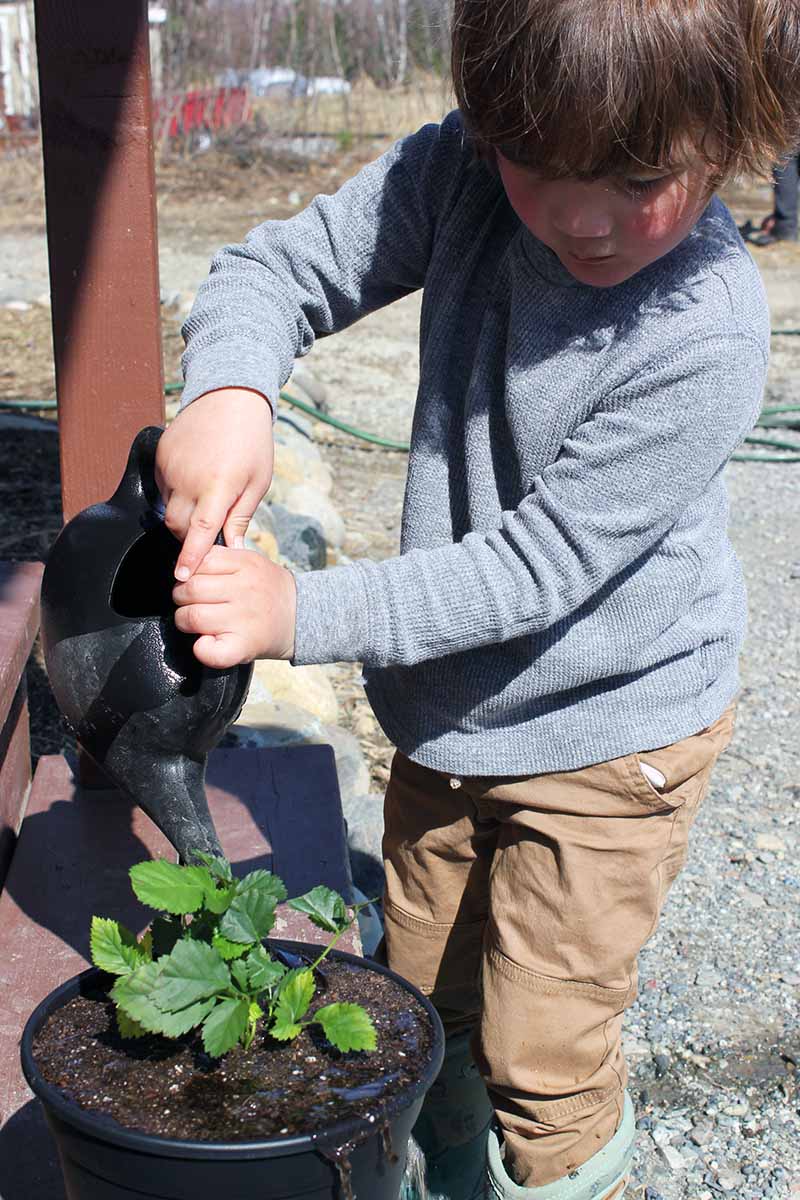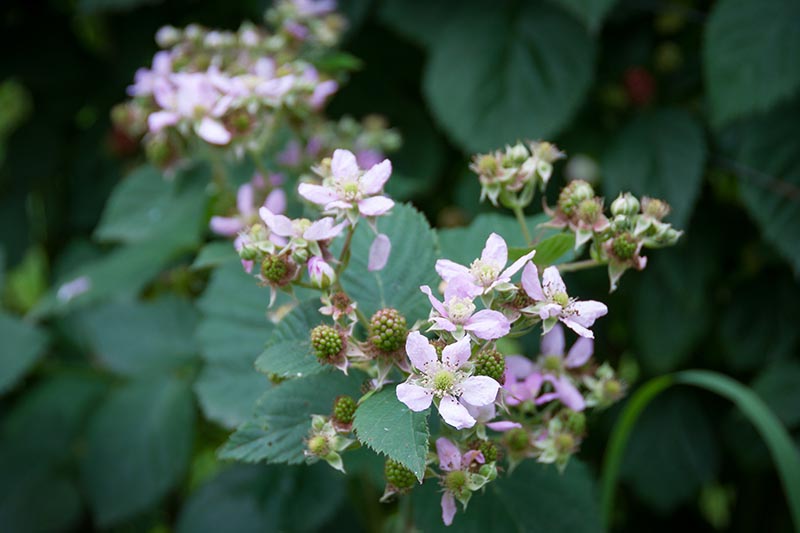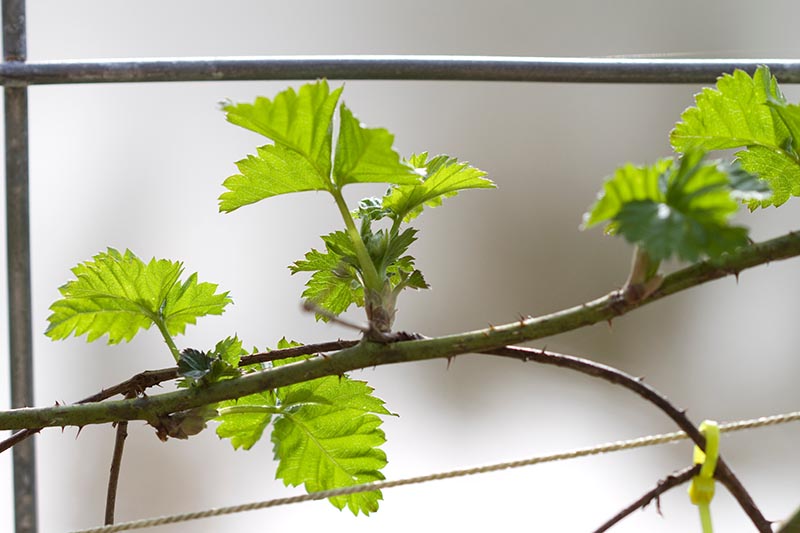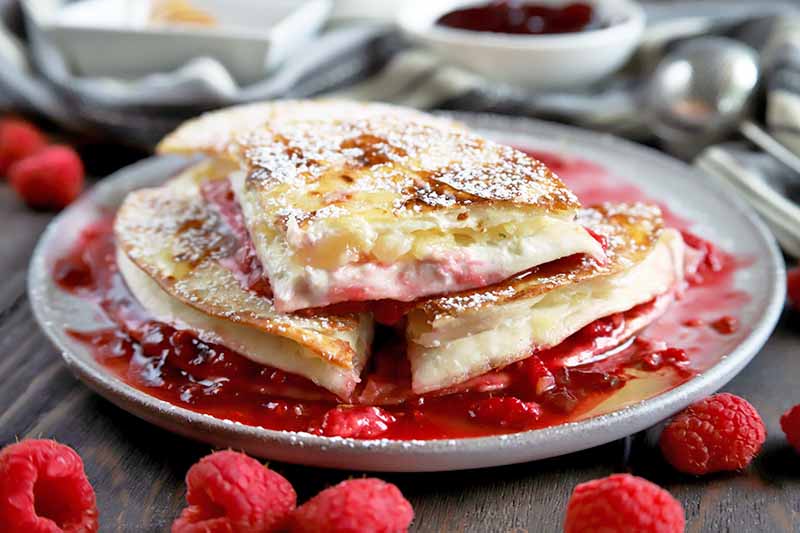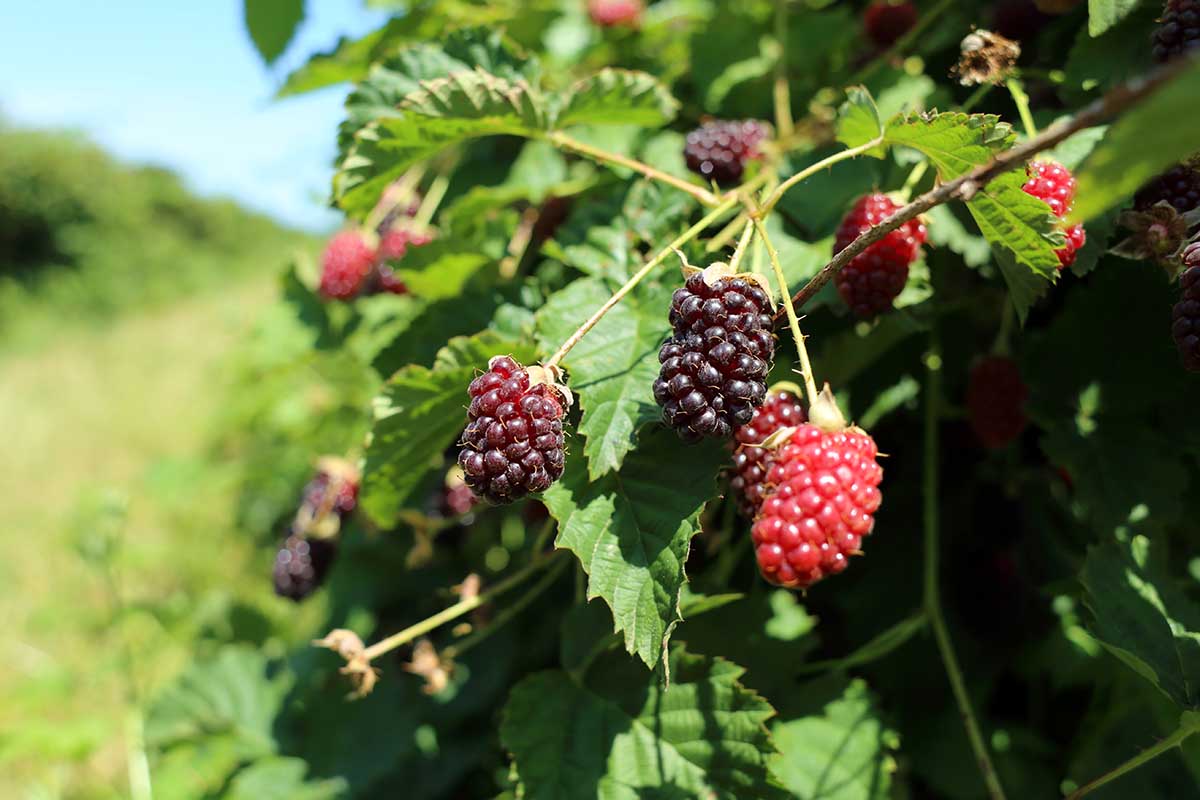Each berry weighs around 7-8 grams, which is heavy for the fruit of a brambly Rubus plant. For comparison, a typical blackberry weighs 5-7 grams, and a raspberry averages 3-5 grams. Both of these berries, like the boysenberry, are part of the genus Rubus and members of the Rosaceae family – which also includes apple, peach, and almond trees, as well as roses. We link to vendors to help you find relevant products. If you buy from one of our links, we may earn a commission. It’s actually so juicy and thin-skinned that farmers can’t really send it off to grocery stores. It just doesn’t ship well. Most varieties reach maturity in midsummer, but begin to go bad just three days after picking. This means it’s an ideal bush to plant in your garden if you want to enjoy the freshly picked berries.
Packed with nutrition, these delicious berries also boast a number of healthy nutrients, from gut-healthy fiber to vitamins and polyphenols. Let’s find out a bit more about the benefits of boysenberries.
A Boysenberry Primer
Developed in the 1920s by Rudolph Boysen, our featured fruit (Rubus ursinus × R. idaeus) is a cross between a loganberry, dewberry, blackberry, and raspberry. And if you’ve ever visited southern California’s theme parks, you’ll know that no mention of boysenberries is complete without talking about Knott’s Berry Farm. Because even though ol’ Rudolph Boysen hybridized four berries to produce the boysenberry, his plants got kind of… wilty. He gave the dying bushes to farmer Walter Knott in 1938, and Knott succeeded in bringing them back to life.
They then became bestsellers at the Knotts’ fruit stand in Buena Park, California. Eventually a restaurant and then a theme park replaced the farmstand, but fresh boysenberry pie remains a featured menu item there. All of the modern boysenberry cultivars can be traced back to Knott’s Berry Farm, according to their website. And the park even hosts a boysenberry festival every spring. If you ever go, you can enjoy all sorts of boysenberry dishes, from mashed potatoes and tamales to lemonade, beer, and wine. Pretty amazing, don’t you think? My mouth waters just thinking about visiting this festival, which is definitely on my bucket list. Due to the berry’s short shelf life, it’s only sold fresh in the areas that produce it, notably parts of California, Oregon, and New Zealand.
Most are processed into jams, jellies, frozen pies, and syrups, all products with a longer shelf life than delicate fresh fruit. They are also often sold frozen. But if you want to enjoy them fresh, you can always grow them yourself. Learn more about how to plant and grow boysenberries in our guide.
Potential Health Benefits
This tasty fruit isn’t just fun to eat, though. It can also be beneficial to your health.
One cup of the fruit has 7 grams of dietary fiber, which we all know helps prevent constipation and can help the good bacteria to grow and diversify in our gut. The folate and other B vitamins it contains help keep the brain sharp, and aid in the process of converting the food we eat to usable energy. Plus, folate is vital to pregnant women for the healthy development of a baby’s spinal cord and brain. So if you’re trying to get pregnant, now’s the time to start eating boysenberries. In addition, a cup of berries has around 200 milligrams of potassium and just 1.3 milligrams of sodium. This combination can increase overall heart health and help reduce the risk of hypertension (aka high blood pressure).
A study in hypertensive rats showed that ingesting high doses of juice of this berry significantly helped to lower blood pressure. Boysenberries also contribute to bone health. One cup contains 13% of the daily recommended value of vitamin K for adult women, which helps to support bone metabolism. Low vitamin K levels in the body have been associated with osteoporosis. And of course, like many berries, they contain lots of vitamin C, which we all know can support the immune system and help us to fight infections. But wait! It gets better. The high concentration of polyphenols (antioxidant-packed micronutrients) that they contain has been shown to have anti-inflammatory properties. Reduced inflammation may help to prevent chronic diseases including cardiovascular disease.
And if you’ve ever had a doctor tell you your triglyceride levels – a type of fat that can lead to heart disease – are high, preliminary research shows that boysenberries might help lower them. Even though I’m relatively young, I’ve been warned about my triglycerides a few times since the birth of my son. I’ve since increased my vegetable and fruit intake… and planted a boysenberry bush to help, too. But the benefits of this fruit don’t stop there. They’re also packed with anthocyanins, pigmented flavonoids with antioxidant properties that give them their vibrant color. Anthocyanins have been shown to help strengthen vision, reduce cancer cell multiplication, and help prevent tumor formation. And last but not least, the relatively high level of manganese in one cup of berries is 35% of the daily value recommended for adults. Manganese plays a role in many bodily functions including carbohydrate metabolism, bone formation, and immune responses.
Clearly, this fruit is one to add to your diet. The best way to reap the health benefits of this superberry is to eat it fresh or frozen (without added sugar!), whether that’s tossed into a smoothie, enjoyed with your favorite nuts, or sprinkled on yogurt.
Garden Use
This brambly bush has pretty white flowers and grows to about four to six feet tall and wide, so give it lots of space.
A perfect addition to your herb garden, this plant likes to grow near yarrow, lavender, and rosemary. Plus, these herbs attract bees, and while they don’t technically need pollinators to produce fruit, bees and butterflies can help to increase yields. Birds are attracted to the berries, if you can bear to share your harvest! Otherwise, use bird netting to protect your plants. Learn how to harvest homegrown boysenberries in this guide.
Like other brambles with canes, boysenberries need a fence, trellis, or stake for support. Consider planting them alongside a fence or house wall for a lovely thicketed look. Thorny varieties are good defensive plants and help to deter intruders.
Culinary Use
You can pretty much use boysenberries in any recipe that calls for blackberries or raspberries, like these tart fruit scones from our sister site, Foodal. Or why not try this delicious cocktail recipe, also from Foodal. If you’re feeling adventurous, try this cream cheese, pineapple, and raspberry quesadilla also from Foodal – but use boysenberries instead of raspberries.
Boysenberries and You: A Match Made in Heaven
If you think blackberries are a little too bitter, try boysenberries instead. It’s sweeter, yet somehow bolder in flavor than ye olde blackberry. And since it’s bigger, it’s easier to eat a cupful (or two, or ten…) and reap some fantastic health benefits.
For me, the best benefit will be when I get to pluck my berries off my bush and put them in a pie. And maybe that berry-cream cheese quesadilla. Because I’m feeling adventurous. What about you? Have you ever tried this berry that started a whole theme park? Let us know in the comments below. In the meantime, check out these berry helpful articles:
Juicy and Sweet Tips for Starting Your Own Berry Patch A-Foraging We Will Go: Berry Edition The Ultimate Fall Berry Planting Guide
Photos by Laura Melchor, Meghan Yager, and Raquel Smith © Ask the Experts, LLC. ALL RIGHTS RESERVED. See our TOS for more details. Uncredited photos: Shutterstock. Nutritional information by Tori Vallana, RD. The contents of this article have been reviewed and verified by a registered dietitian for informational purposes only. This article should not be construed as personalized or professional medical advice. Gardener’s Path and Ask the Experts, LLC assume no liability for the use or misuse of the material presented above. Always consult with a medical professional before changing your diet, or using supplements or manufactured or natural medications.
